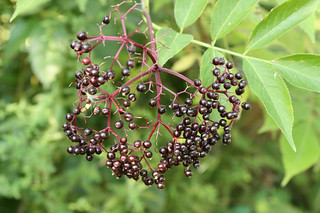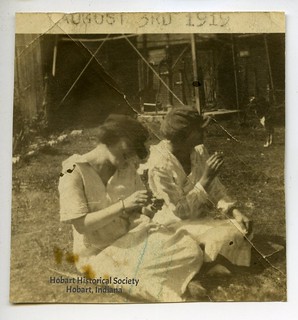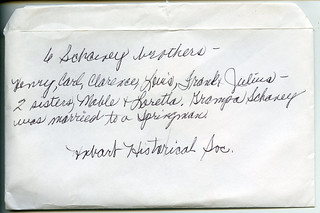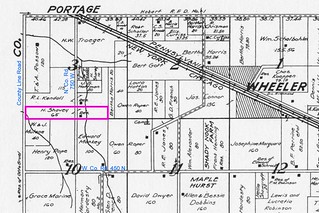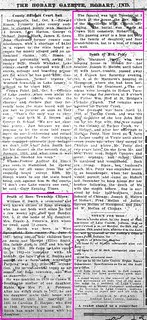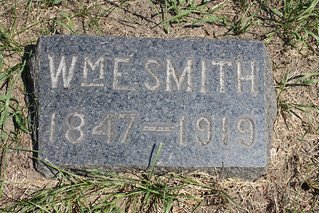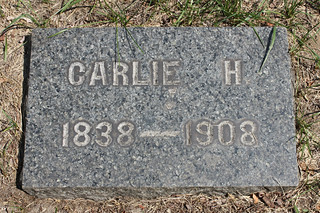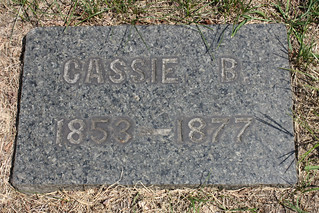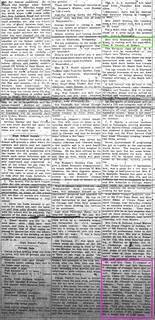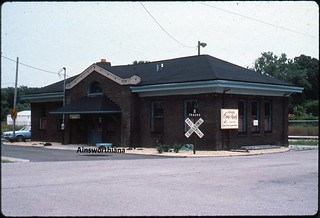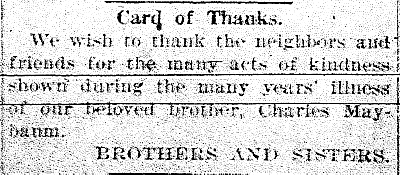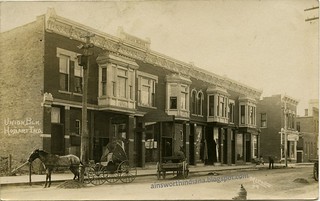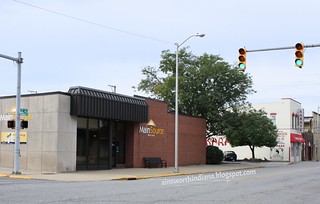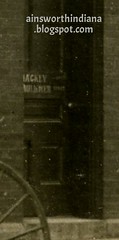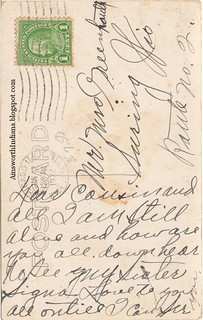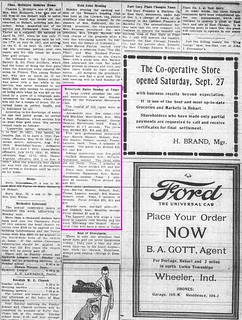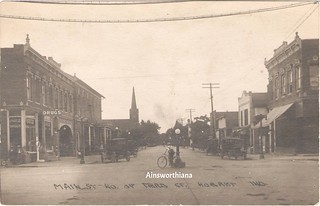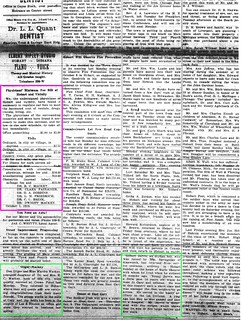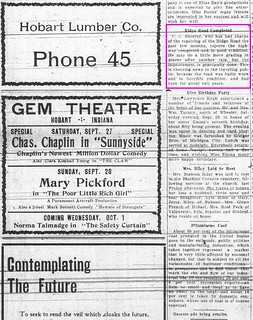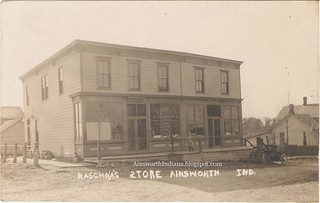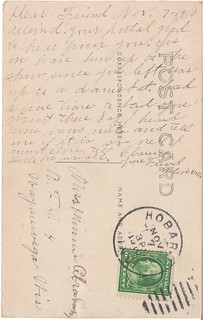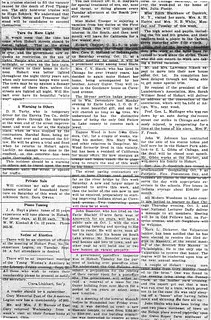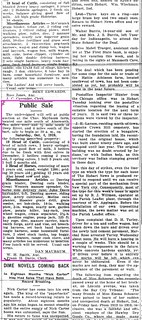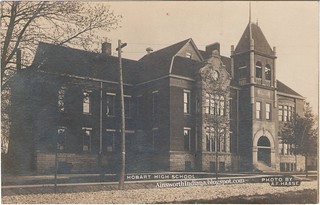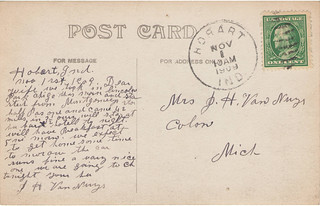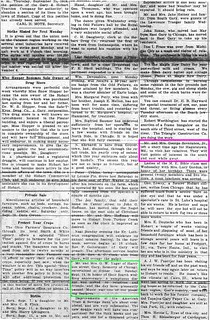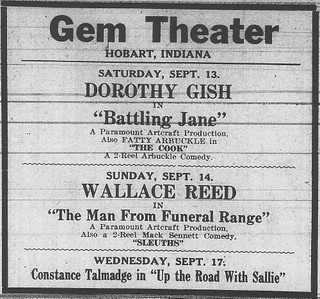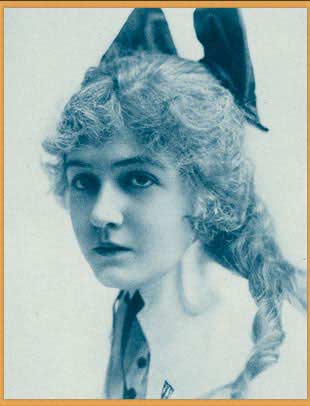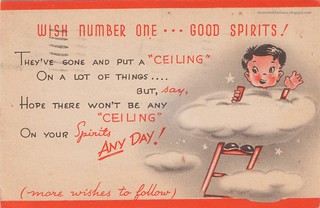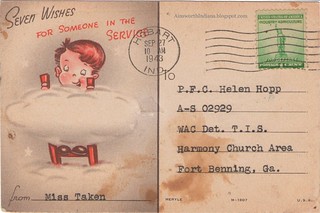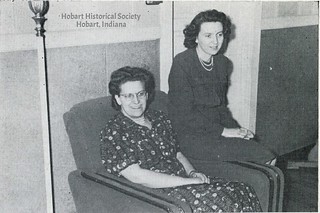In spite of the fact that the Ream family seems to have no connection whatsoever to Ainsworth, there has been a special place in my heart for them ever since I happened to buy some of their papers at auction
almost three years ago. So I take note of the passing of Henry Ream — father of the 17-year-old Arnold killed by lightning, as reported in the ragged 1903 newspaper I found among the papers (and random dishes and books) in that box I bought.
His son's untimely death was not the last tragedy Henry had to live through. A year later, his 17-year-old nephew, Roscoe Howard, died after accidentally shooting himself in the head as he went out to hunt birds on a neighbor's farm. In 1917, Henry had lost another son in an accident. William Ream, 33 years old and single, living with his parents, had been doing some work in the basement of "Watkins," wherever that might be. He was alone at the time, so when he was found in the afternoon, unconscious on the basement floor, no one knew what had happened — or would ever know, for William died that evening without regaining consciousness. The conjecture was that he had fallen and struck his head.
Henry, in contrast, died in his own bed on October 15, 1919, peacefully, and not unexpectedly, as he had suffered from "heart trouble" for several years.
He had been born on June 20, 1852,* in Ohio. Sometime before 1860, his parents, John and Mary (Clark) Ream, brought their family to Indiana and settled on a farm east of Hobart. There Henry grew up.
For unknown reasons, in 1883 he went to Arkansas, and there he met and married Josephine Havely. Henry and "Josie" returned to Hobart to live and raise their family. They farmed east of town until the spring of 1908, when Henry decided to retire from farming and move his family to Hobart. According to the
Gazette, he "joined two small houses on the corner of Third and Linda streets" to create the new family home. (Unfortunately the story doesn't indicate
which corner of Third and Linda Streets.)
Henry was survived by his wife and three children in their twenties: Bert and Edith, who both still lived at home, and Ollie,** now the wife of John Fleming.
Henry is buried in Crown Hill Cemetery.
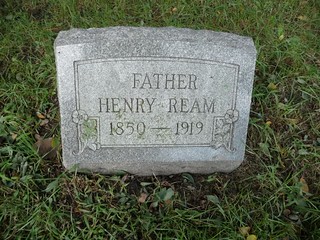 (Click on image to enlarge)
(Click on image to enlarge)__________________
*This is the date given in both his obituaries and it accords with the Indiana death record, but all census records suggest he was born in 1850, and that is the year carved on his grave marker.
**The
Gazette gives her name as Alice, but the
News and the census and marriage records all call her Ollie.
Sources:
♦ 1860 Census.
♦ 1900 Census.
♦ 1910 Census.
♦ 1920 Census.
♦ "Accidental Shooting." Hobart Gazette 15 July 1904.
♦ "Death Comes Suddenly to Wm. Elmer Ream." Hobart News 30 Aug. 1917.
♦ "Dies as a Result of Fall." Hobart Gazette 31 Aug. 1917.
♦ "Henry Ream Dies Suddenly." Hobart Gazette 17 Oct. 1919.
♦ "Henry Ream, Aged Hobart Citizen, Dies Suddenly Wednesday." Hobart News 16 Oct. 1919.
♦ Indiana Marriage Collection.
♦ Indiana WPA Death Records Index.
♦ "Local Drifts." Hobart Gazette 27 Mar. 1908.
